FAQ
- What is SEER?
- What does AFUE mean and why is it important?
- Why is it important to have regular maintenance on my HVAC unit?
- How to avoid emergency furnace repair?
- When do I need to replace my furnace filter?
- Should I switch my heating fuel?
- Advantages of multi-stage, multi-speed furnaces?
- How does an air conditioner work?
- What is two-stage cooling?
- How do I calculate house heat loss from utility bills (ie. gas bill)?
What is SEER?
The Seasonal Energy Efficiency Ratio is a cooling efficiency rating for air conditioners. The higher the SEER, the better the energy performance, the more you save.
What does AFUE mean and why is it important?
AFUE stands for Annual Fuel Utilization Efficiency. The fuel in this case being natural gas. Althought electricity is also used for the operation of the furnace blower and inducer motor, when it comes to AFUE we are only referring to the source of fuel that is used to generate heat.
Given that the AFUE is an efficiency term, the AFUE of a gas furnace is rated from a scale of 0 to 100% gas consumption efficiency. Today in Toronto, any furnace with an AFUE of 94%, is considered a high-efficiency furnace – based on Canadian government regulations. This used to be at 90% followed by 92%, previously.
What do you think the AFUE of your furnace is? Although, this number might not be readily available, you could always calculate it based on information that should be supplied on the furnace sticker – usually inside the furnace, meaning that you have to open the furnace front door to get this info. The AFUE is the OUTPUT heating power/INPUT heating power. The INPUT and OUTPUT values are always displayed on the furnace sticker. For a 20 to 30 year old furnace, you are usually looking at around 70% AFUE. Please do remember that the AFUE, depending on the quality of the furnace and the manner in which it has been maintained throughout the years, will slowly decline over the years. So, for instance, if a 25 year old furnace is rated to have an AFUE of 70%, its true efficiency is probably at around 60% after 25 years of hard work. This value can be far less depending on the furnace maintenance record.
If you have a furnace that is about 20 years old or older, its AFUE is probably around 60% at the present moment- which means that for every dollar you are paying to heat your home, only 60 cents is used towards actually heating your home. The other 40 cents is absolutely wasted.
Why is it important to have regular maintenance on my HVAC unit?
An HVAC unit is a machine that requires periodic maintenance just as any other machine would. For example, your car needs periodic oil changes, batteries recharged, etc to keep running. In the same way, a furnace and air conditioner unit need maintenance to run efficiency and effectively. Annual maintenance is essential to avoid emergency repairs that are often costly to a homeowner.
Furnace Maintenance
How to avoid emergency furnace repair?
Simple tips such as these can prevent your heating unit from failing during the times we need them most, frigid winter nights. Avoid emergency calls and:
- Have annual maintenance performed on your heating unit,
- Change the filter regularly (every 60 to 90 days),
- Hire a qualified and experienced technician to effectively fix any required furnace repairs
When do I need to replace my furnace filter?
Replacing a furnace filter is an important step every homeowner must take to keep their home’s heating and cooling running efficiently for years to come – and to protect and improve indoor air quality by preventing indoor air contaminants. Dirty filters can cause a variety of malfunctions to your HVAC system including a/c ice build up and furnace overheating (due to airflow limitations) and it is often overlooked by homeowners. It is crucial to check your furnace filter monthly. Simply hold the filter towards light and see if light easily passes through the filter. If not, this is a great indication that the filter is dirty and needs to be changed. This action will ensure that you will get a better heating in the winter and air conditioning in the summer. The combination of furnace maintenance and air filter changes will increase energy efficiency, extend unit lifespan, improve air quality and lessen the chance of costly repairs.
Certain factors must also be considered in determining the correct time to change the filter. Such factors include:
- Type of furnace filter (pleated, fibreglass, reusable, etc)
- Pets
- The level of pollution around the home (construction, renovations, etc)
- Home air quality (smoking)
These factors can greatly affect an air filter life, and so, the best way of knowing when it’s time to replace the filter is by checking on it regularly.
Should I switch my heating fuel?
In most parts of Canada, it will be more expensive to heat with an electric furnace than one using oil or gas. An exception would be if you heat primarily with a wood stove and use the furnace only infrequently as backup. In this case, the low cost and low maintenance requirements of an electric furnace may be a major advantage. Deciding between oil and gas furnaces is a matter of choice. Make the calculation to see if it is significantly cheaper to use one fuel or another based on current prices in your area. Oil furnaces require a tank and usually a chimney. There may be additional costs for chimney modification or oil storage tanks when purchasing an oil furnace. Some home insurance companies require periodic oil tank replacements. Check if a new gas furnace would also require relining the chimney. Consult with your contractor and make sure that these costs are included in your estimates.
Advantages of multi-stage, multi-speed furnaces?
Multi-stage furnaces have become more popular lately, although they are more expensive than the single stage furnaces that have been sold for decades. Multi-stage furnaces have two or three levels of burner function, and an efficient, modulating circulation fan to move the heat into the house. They can provide additional heat when a quick temperature rise is required, such as in the morning when a house with a setback thermostat is being heated from 15°C to 21°C (59°F to 70°F). A traditional single speed furnace would take longer to get up to temperature. The multi-stage furnaces are no more efficient than single-stage furnaces; they offer more flexibility and perhaps more comfort.
How does an air conditioner work?
An air conditioner seems as if it cools your home’s air, but it actually makes your home less warm by removing heat from the indoor air and transferring that heat to the outdoor air. Heat is extracted from the home by passing indoor air across a refrigerant coil in the indoor unit. Refrigerant lines then carry the heat to the outdoor unit, where it is released into the outside air. The cooling cycle continues until the indoor temperature reaches the thermostat setting.
What is two-stage cooling?
Two-stage cooling means the air conditioner has a compressor with two levels of operation: high for hot summer days and low for milder days. Since the low setting is adequate to meet household-cooling demands 80% of the time, a two-stage unit runs for longer periods and produces more even temperatures. Longer cooling cycles also translate to quieter, more efficient operation and enhanced humidity control. Compared to a single-stage unit, a two-stage air conditioner or heat pump can remove twice as much moisture from the air. This is important because when moisture levels are high, there’s a higher potential for mold and other pollutant problems.
How do I calculate house heat loss from utility bills (ie. gas bill)?
Here is a sample calculation, using a three-month meter reading for a typical house. You can use any period (but at least two weeks of winter weather is necessary). You can read the meter yourself for the information, look at your furnace bills or phone your utility to see if they have appropriate records. The natural gas usage of other gas-fired appliances in the house is estimated from gas utility data and subtracted from the total for the period in question so that the gas requirement for heating can be isolated. (Oil furnaces are harder to size using this method, but it may be possible using oil fill-up intervals and the number of liters delivered.)
The goal is to find a relationship between the gas consumed and the heating degree days (HDD). A heating degree day is essentially the number of degrees of heating required over the course of 24 hours, compared to a reference temperature of 18°C. For example, if the average daily outside temperature is 10°C, then the number of heating degree days for that day is 18°C – 10°C = 8 HDD. You can get the approximate HDD for your calculation period from the Environment Canada website. Use the data from the “Degree Days: Below 18°C” row.
Once the relationship of the HDD and gas consumption is established, then you can calculate gas consumption for the design temperature in your area. This temperature is usually available from a mechanical contractor or your local building officials. It is not the extreme minimum temperature; it can be estimated from the average temperature over 24 hours on the coldest day of the winter. To approximate the design temperature: go to the historical weather data for your community on the Environment Canada website; find the coldest January over the last several years; then pick out the lowest daily average temperature in that month, and use that as the design temperature. Being a degree or two out will not make a huge difference in the calculation.
The example below uses a design temperature of -35°C. At that temperature, the maximum HDD per day is equal to 53, which is the difference between 18°C and -35°C. Calculating the size of the furnace necessary on the coldest day of the year will mean that the furnace has the capacity to handle any expected local temperature. You can find a furnace’s efficiency rating on its EnerGuide label or in the product documentation.
Example
Total gas consumption from December to March = 1,320 m3
Estimated consumption for other gas appliances (data from utility) = 306 m3
Therefore, gas consumption during the period for heating = 1,320 – 306 = 1,014 m3
Heating degree days for that period (from Environment Canada data) = 2,840 HDD
Heating consumption by degree day = 1,014 m3/ 2,840 HDD = 0.3570 m3/HDD
Heating consumption at 53 HDD/day = (53 HDD/day)(0.3570 m3/HDD) = 18.9 m3/day
Where gas has an energy content of 37.5 MJ/m3, and the existing furnace has an efficiency of 72 per cent, then:
Heat loss at 53 HDD/day = (18.9 m3/day) (37.5 MJ/m3)(0.72) = 510 MJ/day or 21.3 MJ/h*
According to the energy content of electricity, 3.6 MJ/h = 1 kW, then 21.3 MJ/h = 5.9 kW
This heat loss would require a furnace that produces an output of 5.9 kW or about 20,100 Btu/h (1 kW is approximately 3,412 Btu/h).
If we allow the CAN/CSA F280 permissible oversizing of 40 per cent, then the proper furnace sizing would be (1.4)(20,100 Btu/h) = approximately 28,100 Btu/h.
If you are calculating for an oil furnace, heating oil has an energy content of 38.2 MJ/liter.
* Note: This calculation is correct, although many people think the efficiency factor is in the wrong place. It is not. We are calculating the house heat loss based on fuel used and furnace efficiency. A more efficient furnace will have delivered more heat to the house, and the heat loss will be higher.

